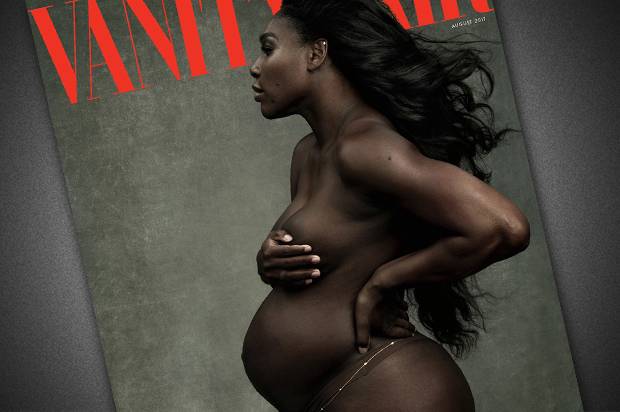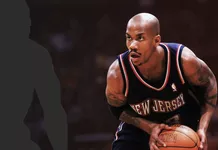“You don’t often see — there aren’t that many — you just don’t see overweight figure skaters for a reason.”
When Gracie Gold, the leading lady of US Figure skating, candidly made that statement in front of scads of reporters after a disappointing Skate America competition, many of the reporters were left confused, even alarmed, that Gold saw herself as an overweight figure skater. Gold later announced that she would be taking the Olympic season off to seek treatment for mental health issues, including an eating disorder.
Gold openly shared her struggles with the world. This is not something that has really happened before in elite level skating. Figure skaters are seen as ice royalty, receiving media training from a young age to properly respond to questions in a vague, but kind way. Her honesty lifted the veil on an issue that has silently plagued the sport for many years. While there are no clear statistics on eating disorders in figure skating, former American skater Jenny Kirk estimates that 85% of skaters have suffered, or are suffering from various forms of discorded eating.
Figure skating is an objectively beautiful sport which attracts many little girls who one day want to be the ice princesses they see at major events, flying effortlessly through the air in elaborate, sparkly dresses. There is no doubt that figure skating evokes awe in even the most jaded person – there is simply something special, and so captivating, about the sport that effortlessly blends athletics and art. Despite the controversies around paying off judges, scary injuries, and politics, figure skating remains one of the more popular sports of the winter Olympics. What people see on their TV screens every four years is an image of years of hard work, and often years of stress on body image.
I don’t know of a skater who doesn’t think about their weight. When I was at the height of my competitive career, I was eating one meal a day after training for hours. I was often exhausted and irritated, but my focus was attaining the lean body that we see in those who grace the world stage. There is an element of need here; for athletic purposes, in order to fully rotate those triples and quads, figure skaters have to be incredibly fit and nimble. On an aesthetic level, there is an unspoken requirement that figure skaters need to present a fantasy on the ice; the perfectly packaged – we literally call this packaging – poised performer that everyone wants to be. While all athletes in the sport have their version of this, it all fits into a very similar category of perfection.
But when does that perfection become too much? Where do we draw the line in leanness required for performance, and leanness for vanity sake? Further to all of this, why aren’t we, in the skating world, talking about eating disorders more?
Figure skating fits into its own bubble. The sport lacks accessibility due to the complexity of its rules and the long skating season. Non-skaters have a hard time following it year after year. Competitors at the top of the sport maintain an element of elusively where those not on the ice only get a small peek into their world – a world that is challenging to understand for those even within the establishment. Within this perfectly rosy bubble, skaters are typically not encouraged to speak up about issues they face as it could impact their overall image with the judges, and their federation – who are responsible for providing funding. Speaking up admits humanity, if not brokenness, which no one wants to see in skating. However, thanks to social media, many skaters are using their own channels to shed light into the pressure they face as athletes.
Juila Lipnitskya, marked as the darling of the Sochi Olympics who garnered significant attention for her interpretation of Schindler’s List, came forward to announce her retirement from skating due to an eating disorder.Lipnitskya, who has started her own skating school in Russia, has said that she cannot stay the size of a 12-year-old forever. This comment sheds light on the overarching issue that surrounds eating disorders not just in figure skating, but in gymnastics, and other aesthetic body sports.
The technical requirements of figure skating favor a small, boy-like frame to complete the revolutions in the air. The present judging system operates on a higher risk, higher reward premise, which encourages young athletes to attempt tricks that, oftentimes, their bodies cannot handle. Under this scoring system, we have seen the average age of champions on the international scene plummet, as the rules now encourage taking higher risks with tricks. Once a woman hits post-pubescence, it becomes more challenging to complete the difficult tricks, as their bodies are increasingly apt to carry more fat and retain more water. Female athletes in aesthetic sports are often in a race against time and nature to retain their pre-puberty shape after these body changes happen. If a skater loses lift on their jumps, the first instinct is for a coach to encourage weight loss, instead of addressing strength or technique. Even if these female athletes are able to complete the challenging technical requirements, many times, the judges will find something “wrong” with their overall packaging and deduct points from the largely subjective program component score. Antiquated as it may seem, evaluators are still looking for a certain look for their female skaters (in particular), and use the scoring system to push this agenda.
Within the arena walls, coaches, parents, and others push for athletes to look a certain way. When I competed, I was frequently told by coaches, and judges that I should focus on “making my legs skinnier”. I remember being six years old, grabbing my thighs, wishing that they would shrink. Now, twenty years later, I still struggle to like how my thighs look. Commentators and other coaches within the sport frequently comment on skaters’ physiques as if it is another element in the program. It’s not uncommon to hear coaches suggesting that skaters should “lose 8 – 10 pounds” in order to achieve better results.
Comments about female athletes’ bodies in the sport have a dramatic impact on the competitive expectations and encourage athletes to continue to fit into a limited box that is not representative of the vast diversity of bodies in the world. It remains difficult for coaches, and federations, to step in and address disordered eating when results come in, despite the fact that it shortens the careers of competitors at the highest levels. Eating disorders reduce muscle strength and endurance, which are crucial to success in the sport. As athletes age, they must continually reduce their caloric intake to counteract the natural progression of nature on their bodies, which further pushes them into disordered eating patterns.
It is normally after many years of dealing with disordered eating do skaters seek help. Kirk affirms this sentiment in a 2010 interview.
“Instead of pulling a skater out of a competition because they are injured or need serious help because they are suffering with an eating disorder, the majority of coaches and federation officials would rather push a skater to compete than risk losing an international medal.”
Canada’s Gabrielle Daleman, 2017 World bronze medalist and two-time Olympian, has taken time off from skating in the current 2018 -2019 season to focus on her mental health. Prior to the 2018 Olympics, Daleman opened up about how people would comment on her body.
“I was always too muscular or too fat, so there would be times when I wouldn’t eat, or when I did eat I wrote down the calories and then would burn that off, and then burn double it.”
“But that’s life”.
The mentality around the body in figure skating, especially when wearing tiny skating dresses, causes skaters to go to extreme means to achieve the body their coaches, federation, judges, and fans want to see. Gracie Gold used to go to a sweat lodge to help achieve her physique. Male figure skater Johnny Weir admitted in a 2006 interview that he just “doesn’t eat as much as an athlete should”. Comments on YouTube videos, social media platforms affect the skaters, and act as a further catalyst for disordered eating.
These extremes don’t stop at the body, and often extend to the overall look of a skater – which we call packaging. Third parties, such as coaches, and sometimes federation heads, sometimes have a say in how you present yourself on the ice; from hair color, costume, to media presence contribute to the pressure to control what a skater can, which contributes to the development of eating disorders. This mixed with the “image-making and politiking” within figure skating, where figure skaters are fighting for sponsorships, and overall attention, fitting into the pre-established box is the way skaters tend to go, even if it leads to lifelong mental struggles with self-esteem, eating disorders, and other mental issues later on in life. Figure skating is a harsh sport, covered supremely in rhinestones, pretty smiles, and heartwarming stories. The national and international federations work tirelessly to maintain a wholesome package of the sport, as an alternative to other, more overtly violent sports. There is an element of due-diligence that these federations are not exercising but failing to address the issue. The stigma around mental health remains strong, and is stronger still in sport.
Unfortunately, there is no simple way to solve this systematic problem in figure skating, and other sports like it, when it is an immensely, deeply, cultural issue. Many time, skaters end up leaving the sport to move onto better things, simply because the pressure is too much. While there were many reasons that lead to my “retirement” from skating, the biggest issue was that I was tired of trying to fit into a box I was not made to fit in. Federations need to stare this issue dead on, and address it, providing training to coaches, and athletes on it, just as training would be offered on understanding the rule changes in the sport. The federations need to place pressure on the ISU to raise the minimum age of skaters, with a focus on women, so the pressure to remain the size of a 12 year old is lifted, and athletes can feel comfortable embracing womanhood.
With these skaters bravely coming forward to shed light onto painful and challenging issues, we in the wider skating community need to support them, and advocate for change within the sport. Maybe then, we can appreciate that you can be a champion, while having a different body type.









Well said Yelena!
It’s about time that this issue of body image in figure skating is addressed and brought to the forefront. Undoubtly, many young girls in the sport are silently dealing with negative “body-image” comments from coaches, judges, and other sport officials potentially leading to harmful results.
“While there were many reasons that lead to my “retirement” from skating, the biggest issue was that I was tired of trying to fit into a box I was not made to fit in.”
This sentiment rings so true for me. When I quit at 17, after a decade of competitive skating, it was also mainly because I was done with trying to meet the impossible image benchmarks set by the sport. I still remember feeling fat and depressed because I couldn’t get my thighs under 18”! Fortunately, 30+ years of post skating life experience has given me healthier perspective.
Love this. I am so moved by these women who’ve chosen to speak out — Yulia, Gracie, Gabby… We need everyone to start speaking out. Christine Brennan’s been talking about this for years. One woman who seems to be able to balance the big tricks with a womanly figure is Kaetlyn; she’s been a favorite of mine since the beginning of her Senior career and clearly she’s got a certain It Factor and incredible lift on her jumps that may not be easily repeated, but more than that I suspect that part of the reason she never “lost” her jumps is because her triples came late and she hit puberty early, so she never had to make a huge adjustment into a new figure.
It’s funny — I was always such an Ashley fan and never a great fan of Gracie’s… Until all this. Now I’m gunning for her so hard.